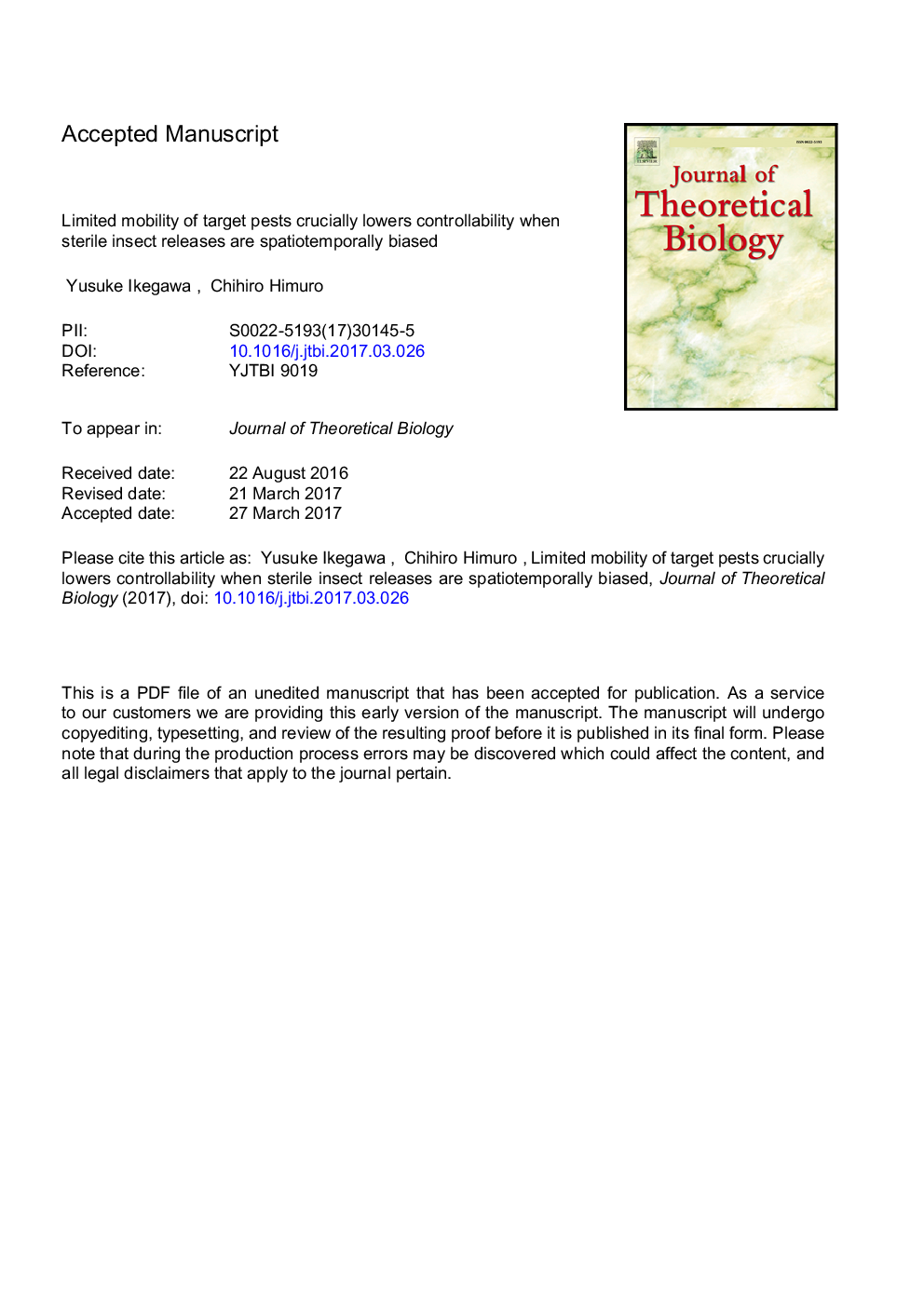| کد مقاله | کد نشریه | سال انتشار | مقاله انگلیسی | نسخه تمام متن |
|---|---|---|---|---|
| 5760023 | 1623789 | 2017 | 33 صفحه PDF | دانلود رایگان |
عنوان انگلیسی مقاله ISI
Limited mobility of target pests crucially lowers controllability when sterile insect releases are spatiotemporally biased
دانلود مقاله + سفارش ترجمه
دانلود مقاله ISI انگلیسی
رایگان برای ایرانیان
کلمات کلیدی
موضوعات مرتبط
علوم زیستی و بیوفناوری
علوم کشاورزی و بیولوژیک
علوم کشاورزی و بیولوژیک (عمومی)
پیش نمایش صفحه اول مقاله

چکیده انگلیسی
The sterile insect technique (SIT) is a genetic pest control method wherein mass-reared sterile insects are periodically released into the wild, thereby impeding the successful reproduction of fertile pests. In Okinawa Prefecture, Japan, the SIT has been implemented to eradicate the West Indian sweet potato weevil Euscepes postfasciatus (Fairmaire), which is a flightless agricultural pest of sweet potatoes. It is known that E. postfasciatus is much less mobile than other insects to which the SIT has been applied. However, previous theoretical studies have rarely examined effects of low mobility of target pests and variation in the spatiotemporal evenness of sterile insect releases. To theoretically examine the effects of spatiotemporal evenness on the regional eradication of less mobile pests, we constructed a simple two-patch population model comprised of a pest and sterile insect moving between two habitats, and numerically simulated different release strategies (varying the number of released sterile insects and release intervals). We found that spatially biased releases allowed the pest to spatially escape from the sterile insect, and thus intensively lowered its controllability. However, we showed that the temporally counterbalancing spatially biased releases by swapping the number of released insects in the two habitats at every release (called temporal balancing) could greatly mitigate this negative effect and promote the controllability. We also showed that the negative effect of spatiotemporally biased releases was a result of the limited mobility of the target insect. Although directed dispersal of the insects in response to habitats of differing quality could lower the controllability in the more productive habitat, the temporal balancing could promote and eventually maximize the controllability as released insects increased.
ناشر
Database: Elsevier - ScienceDirect (ساینس دایرکت)
Journal: Journal of Theoretical Biology - Volume 421, 21 May 2017, Pages 93-100
Journal: Journal of Theoretical Biology - Volume 421, 21 May 2017, Pages 93-100
نویسندگان
Yusuke Ikegawa, Chihiro Himuro,